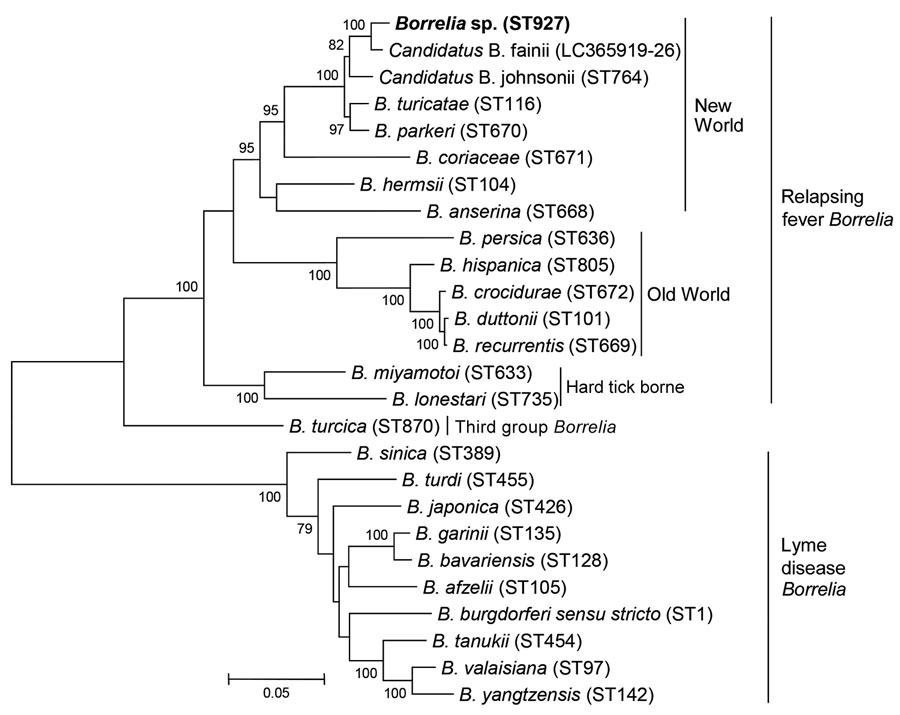Volume 26, Number 12—December 2020
Research Letter
Pathogenic New World Relapsing Fever Borrelia in a Myotis Bat, Eastern China, 2015
Figure

Figure. Phylogenetic analysis of Borrelia species based on 8 concatenated housekeeping genes (clpA-clpX-nifS-pepX-pyrG-recG-rplB-uvrA). Bold indicates Borrelia species identified in study of pathogenic New World relapsing fever Borrelia in a Myotis bat, eastern China, 2015. The tree was constructed by using the maximum-likelihood method in MEGA7 (https://www.megasoftware.net). Bootstrap values were calculated with 1,000 replicates. There were a total of 4,776 positions in the final dataset. Reference sequences of Borrelia species were downloaded from the Borrelia MLST database; the corresponding sequence type (ST) number of each Borrelia species is shown in parentheses. For Candidatus Borrelia fainii, the GenBank accession number is shown instead of an ST number because the 8 housekeeping gene sequences of Candidatus Borrelia fainii were only submitted to GenBank and no ST number was assigned. Scale bar indicates 5% divergence.